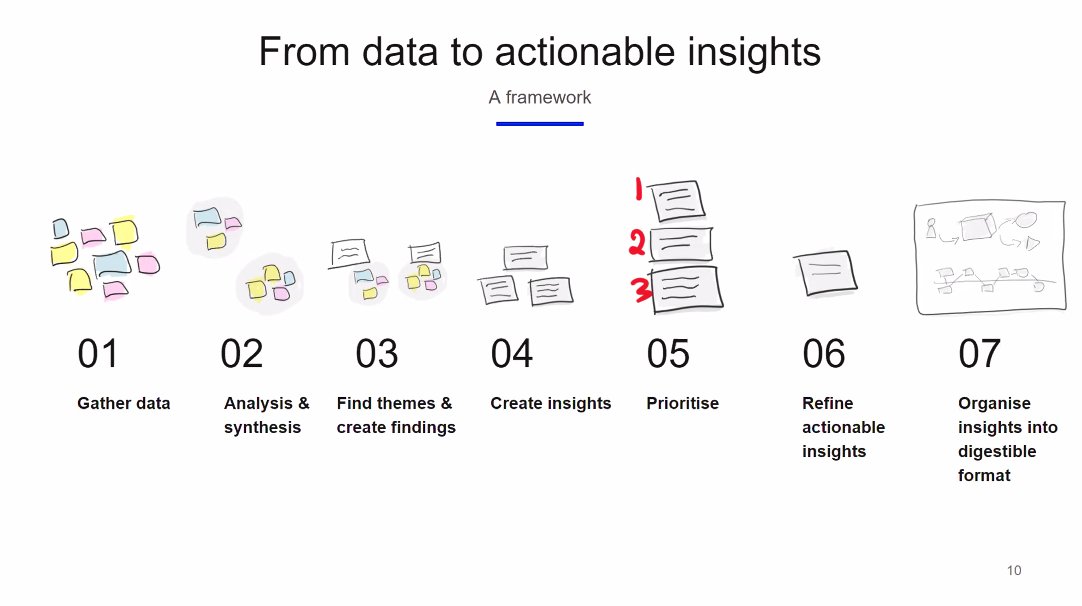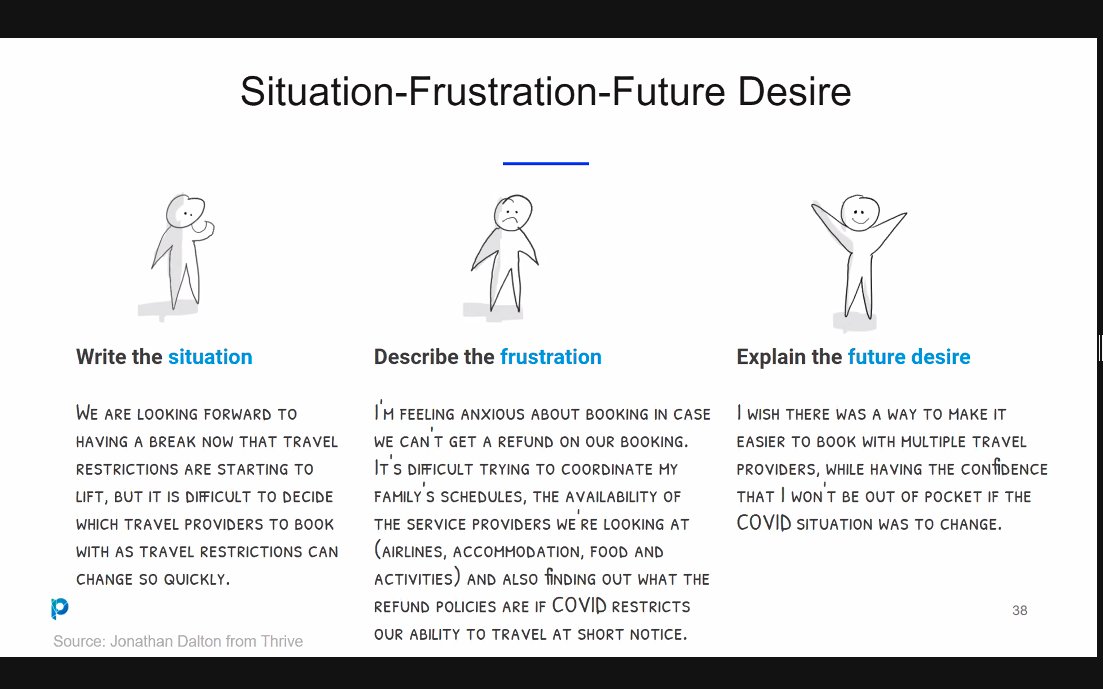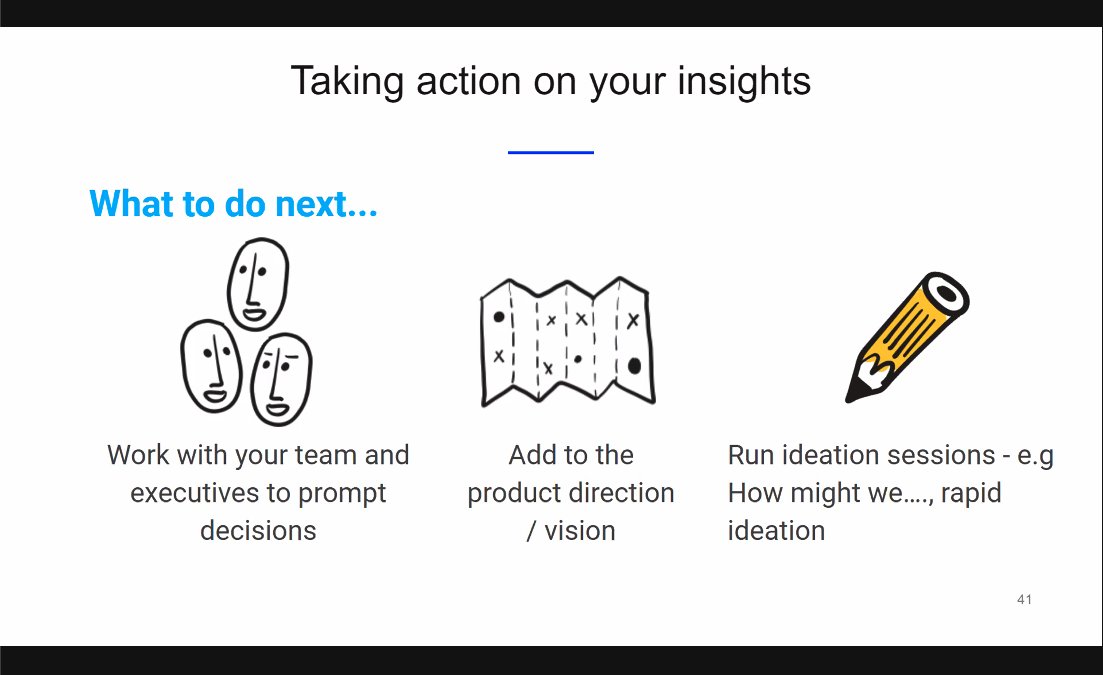
We're at the last presentation of Design Research 2021!!!!
Ruth Ellison, Director of Digital Squads & co-Lab at the Digital Transformation Agency
&
Michelle Pickrell, User Insights Lead at eHealth NSW
— A Framework for Creating Actionable Insights
#DR2021
Ruth Ellison, Director of Digital Squads & co-Lab at the Digital Transformation Agency
&
Michelle Pickrell, User Insights Lead at eHealth NSW
— A Framework for Creating Actionable Insights
#DR2021
Ruth and Michelle have condensed a half day workshop into this 20 minutes presentation [prepare for a whirlwind!]
"What do I do with all this data???!!?"
It's not the data from research that impacts a product, it's the insights from the analysis that are most impactful.
It's not the data from research that impacts a product, it's the insights from the analysis that are most impactful.
Hierarchy of meaning
Data
Findings
Insights
Actionable Insights
Data
Findings
Insights
Actionable Insights
Actionable Insights Framework
1. Gather data
2. Analysis and Synthesis
3. Find themes and create findings
4. Create insights
5. Prioritise
6. Refine actionable insights [takes the longest time!]
7. Organise insights into digestible format
1. Gather data
2. Analysis and Synthesis
3. Find themes and create findings
4. Create insights
5. Prioritise
6. Refine actionable insights [takes the longest time!]
7. Organise insights into digestible format

We often have less and less time to work on insights so deliver less actionable insights.
They'll be focussing on steps 4-6
They'll be focussing on steps 4-6
Insights are a combination of data and knowledge
Ruth and Michelle are now going through each section of the canvas and how to fill them out.
A good insight is:
—Grounded in data
—Simple in language and context
—Meaningful and memorable
—Fresh perspectives that challenge exisiting assumptions about users
—Aligned to strategic priorities and business goals
—Grounded in data
—Simple in language and context
—Meaningful and memorable
—Fresh perspectives that challenge exisiting assumptions about users
—Aligned to strategic priorities and business goals
Thank you both so much @RuthEllison @uxmich!!
(can you post that heirarchy of information slide😀?)
#dr2021
(can you post that heirarchy of information slide😀?)
#dr2021
@threadreaderapp unroll please
• • •
Missing some Tweet in this thread? You can try to
force a refresh










